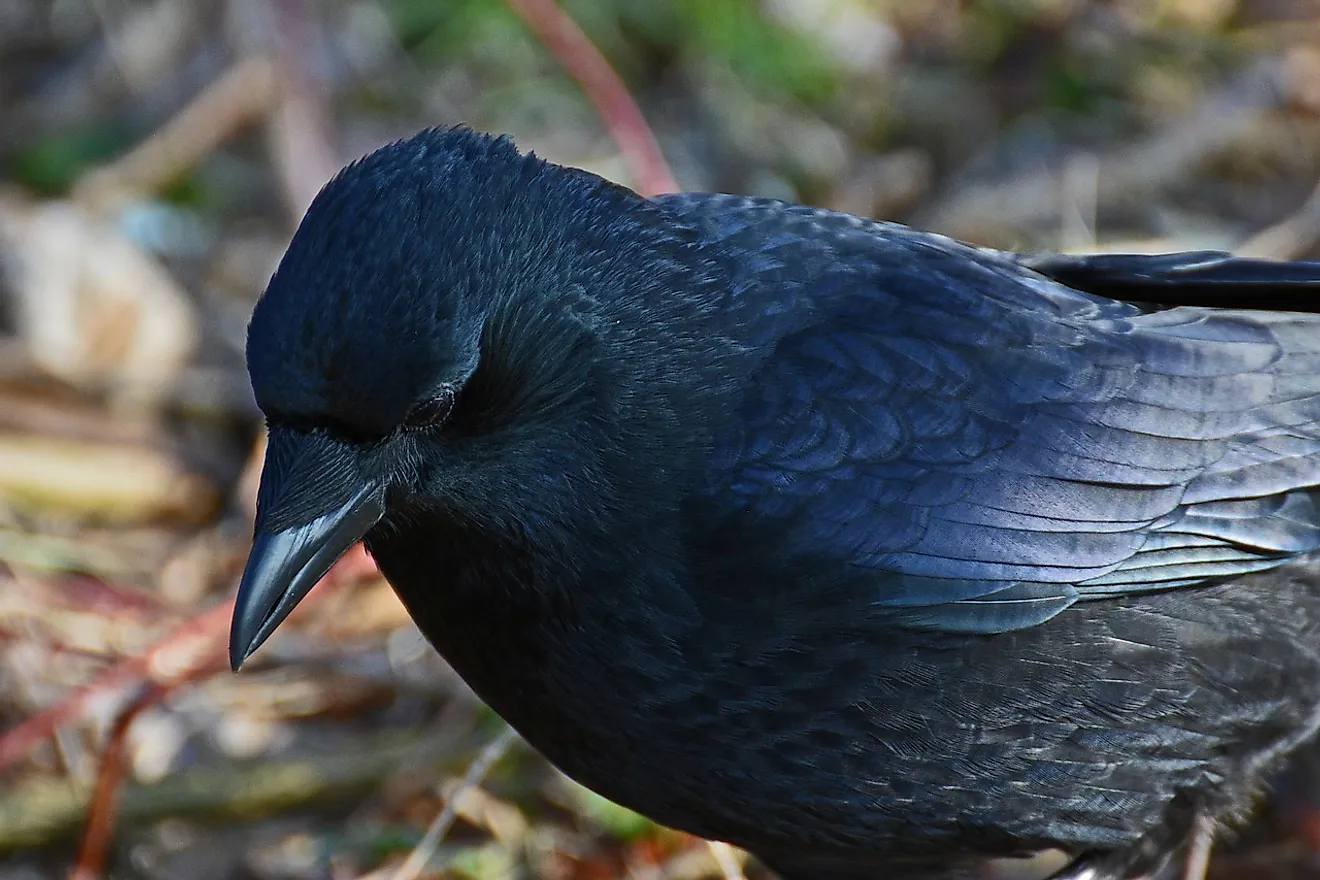Common Raven Facts: Animals of Europe

5. Physical Description
Common ravens, given the scientific name Corvus corax, are found to some degree almost everywhere across the globe, although majority of their population can be located in Canada, northern parts of Europe, Scandinavia, Central Asia, the Indian subcontinent, and Central and North America as well. Their origins are believed to be within the Old World of Europe, Africa, and Asia. They are black birds that are formidable in size, and easily identified by their iconic tails, which are formed into the shape of a wedge. Feathers known as 'hackles' can be found at the base of their throats, and these are frequently used for interacting with other birds. Their rough calls distinguish them from other species of Corvus (crows, ravens, and jackdaws), along with their sturdy bills and their acrobatic flying patterns.
4. Diet
Common Ravens are accomplished foragers, and known to gladly feed on anything they can get their claws on. Like vultures, they have no issue feasting on unfinished meals of bigger predators such as decaying animal flesh, especially those of mice and fishes, and other birds such as Great Blue Herons and Rock Pigeons. Insects are also particular favorites of these birds, including scorpions, butterflies, grasshoppers, worms, and the larvae of other arthropods. Other, plant-based, food sources are berries, corn, and flower buds. They will at times even eat dung left behind by wolves. Ravens also devour farmers' crops and leftover human food from picnics and camping sites, as well as that found in garbage bins and abandoned outside of houses.
3. Habitat and Range
Common Ravens can thrive in just about any kind of natural habitat, both those remote and wild, and even those located in close proximity to human dwellings. They have been found living on sparsely covered beaches, agricultural fields, islands, and tundra, as well as within more thick vegetation in deciduous and coniferous forests. At the present time, the population of these birds are estimated to be at 20 million worldwide, and thus are not considered as being an endangered or vulnerable species. Their ability to survive and live well among humans, as well as their foraging skills, are impressive, and help rank them among the most resilient birds known to man. Time and again, they have been driven out of their natural habitats through deforestation and other human activities, but they have always been able to find another place to live in, where they always seem to eventually thrive and grow in number.
2. Behavior
Common Ravens are known to be daring, smart, and high-spirited, though many farmers find them troublesome enough to poison, hound, and shoot. They are excellent fliers, and are able to perform somersaults and multiple rolls in the air. Experts claim that they have the unique ability to work together with other ravens in order to find solutions to food problems. Proof of this is seen in their ability to follow humans in search of food and appropriate nesting sites. In cases where they’re unable to finish a meal, ravens have been known to store food in the most unlikely of places for consumption later. Last, but not least, ravens are clever enough to build their nests away from predators, preferring sites located high up above the ground, such as atop utility poles, cliffs, and bridges.
1. Reproduction
Ravens are faithfully monogamous creatures, and copulation is initiated by the males, through crouching and the shaking of their tails. When it’s time to build a nest, the female raven takes responsibility, although the male sometimes helps out by bringing in sticks and bones. When the nest has been constructed to the female’s satisfaction, usually after nine days, she then lays 3 to 7 eggs which she incubates for approximately 25 days. After hatching, the young ones stay in the nest for about 7 weeks, after which time they will either leave or linger with their parents a little while longer.











